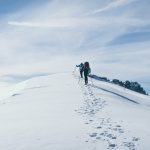If you are a runner, you are probably aware of the popularity of the book “Born to Run” by Christopher McDougall. The book discussed how the Tarahumara Indians of Mexico were able to run so many miles barefoot on very rugged terrain very well and not get injured.
The fact that these people did not get injured without padding when the author’s own feet hurt even with padded running shoes intrigued McDougall. The author came to the conclusion that barefoot or almost barefoot running was able to keep the form in biomechanical alignment.
What are good biomechanics?
The point of having good form is to be both efficient and economical and not get injured. If energy expenditure is not a limitation, then good form should deliver an optimal performance, which often is accuracy and power combined. For example, a quarterback wants to deliver an accurate pass that may be 40 yards long! If he does this very often, he does not want to throw his shoulder out. The same would be true for a baseball pitcher or kicker in football. Since distance running is an event that has energy limitations, we will discuss the definitions of efficiency and economy in relationship to biomechanics.
Running economy is measured as movement velocity for a given energy expenditure. It is the oxygen cost of running at a particular speed. Trying to expend the least amount of energy to reach a certain goal speed is the most economical. The efficiency of movement for running looks at energy of forward propulsion vs. total energy. So if a movement wastes energy or uses energy for other reasons than forward propulsion, it is less efficient. Minimizing energy loss or expended during running can improve efficiency and therefore improve running economy or the oxygen cost to run a certain pace. Economical runners will maintain a certain speed with less oxygen demand, thus if all runners had equal energy expenditures- the most economical runner would win. If all runners had equal maximum energies, the most efficient would win.
Besides training your energy delivery systems (metabolic mechanisms) to optimally deliver fuel, some factors affecting running economy include:
- Biomechanical
- Stride length
- Stride frequency (cadence)
- Foot biomechanics
- Running posture
- Equipment & Personal/ Physiological Attributes
- Shoe weight and body weight
- Leg length and body size
- Leg strength
- Flexibility
- Age
- Environmental/Behavioral
- Air resistance
- Air Temperature and Body Hydration
Minimizing Joint Impact Forces
The other aspect mentioned in good biomechanics for running is not to get injured. Going back to the baseball pitcher analogy, it used to be thought that pitchers throwing fastballs had much shorter careers due to the excessive forces placed on the joints on a repeated basis. This is known as overuse injury. What they found out later, is throwing junk or curve balls, and change-ups, had equal or more issues due to altered biomechanics and joints not in proper alignment.
Nolan Ryan, the hall of fame pitcher, and now team owner, proved what good biomechanics could do as he pitched into his 40s with some of the fastest pitches by anyone at any age.
With running, good biomechanics involve obeying the body’s blueprint to minimize the impact forces that occur when you take the entire mass of the body onto one foot and quickly shift it all to the other. Studies have shown that a forefoot or mid-foot strike, with a shorter stride length, fast cadence, slightly bent knee, and slight lean forward from the ankles on up. The “Big 4” categories that help running form are posture, foot strike, cadence, and lean.
Posture |
|
Foot strike |
|
Cadence |
|
Lean |
|
Figure 1: The Four Main Components of Running Biomechanics
There has been several different versions of the new and improved running biomechanics. The two most popular are the Pose Method by Nicholas Romanov and Chi Running by Danny Dreyer.
The Pose Method has its proponents and opponents. Even several scientific studies have been performed on the Pose Method. One study found that The Pose Method was less economical than standard running methods or a heel strike gait, while others showed dramatic improvements using it. The Pose Method advocates a large knee bend and a pulling action of the foot on the ground. This form is great for faster runners or those who can maintain high-energy expenditure rates. Most runners, who run slower than 6 minutes per mile, use a modified version.
Checking Biomechanics
The best way to check your biomechanics is to perform an aerobic capacity test. Finding out what oxygen consumption and carbon dioxide production you have at various paces using different biomechanics may tell you what works best for you. Realize that if you have used a certain form most of your life, your body has adjusted to this. Just because it feels comfortable does not make it best. Also, realize what an optimal form is at one pace will not be at another. Sprinters and distance runner use very different biomechanics for good reason. The ability to stay relaxed at fast paces is also key to optimal performances and often better biomechanics. Using the Borg RPE scales may be useful for this.
About the Author
Mark P. Kelly has a doctorate in Exercise Physiology and Education Administration, he has specialties in kinesiology, exercise and nutritional biochemistry, weight management, and endurance athletic physiology. He was a nationally ranked duathlete, body building contest winner, trainer of professional athletes, and personal trainer for 20 years. He is a primary writer for the NFPT certification programs, a teacher in universities, and runs Principle Centered Health Human Performance Services, which specializes in assessments and corporate wellness. He can be reached at www.principlecenteredhealth.net or principlecenteredhealth@gmail.com.






